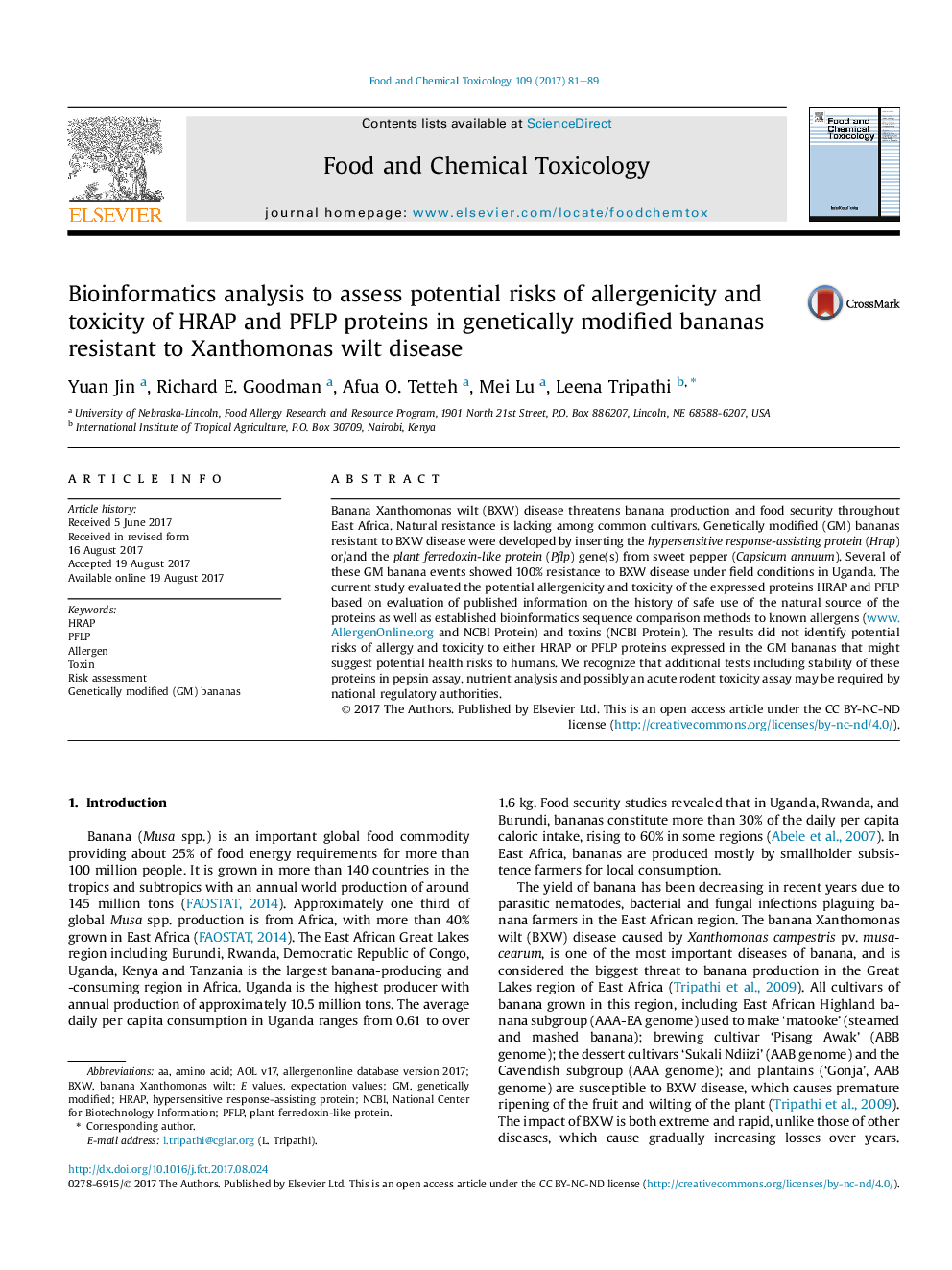| کد مقاله | کد نشریه | سال انتشار | مقاله انگلیسی | نسخه تمام متن |
|---|---|---|---|---|
| 5559957 | 1403305 | 2017 | 9 صفحه PDF | دانلود رایگان |

- Banana was modified by introducing Hrap or/and Pflp genes to provide resistance to Xanthomonas wilt disease.
- Literature databases were searched for reports of allergy or toxicity from the sweet pepper source of Hrap and Pflp genes.
- Bioinformatics searches for allergenicity used amino acid sequences of HRAP and PFLP with AllergenOnline database ver. 17.
- BLASTP were performed using amino acid sequences of both proteins with or without keyword limits toxin or allergen.
- No scientific data was found to suggest risks of allergy or toxicity from the proteins introduced in GM bananas.
Banana Xanthomonas wilt (BXW) disease threatens banana production and food security throughout East Africa. Natural resistance is lacking among common cultivars. Genetically modified (GM) bananas resistant to BXW disease were developed by inserting the hypersensitive response-assisting protein (Hrap) or/and the plant ferredoxin-like protein (Pflp) gene(s) from sweet pepper (Capsicum annuum). Several of these GM banana events showed 100% resistance to BXW disease under field conditions in Uganda. The current study evaluated the potential allergenicity and toxicity of the expressed proteins HRAP and PFLP based on evaluation of published information on the history of safe use of the natural source of the proteins as well as established bioinformatics sequence comparison methods to known allergens (www.AllergenOnline.org and NCBI Protein) and toxins (NCBI Protein). The results did not identify potential risks of allergy and toxicity to either HRAP or PFLP proteins expressed in the GM bananas that might suggest potential health risks to humans. We recognize that additional tests including stability of these proteins in pepsin assay, nutrient analysis and possibly an acute rodent toxicity assay may be required by national regulatory authorities.
Journal: Food and Chemical Toxicology - Volume 109, Part 1, November 2017, Pages 81-89